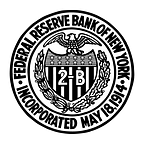Getting the Measure of Managing Culture
Alison Cottrell, CEO, Banking Standards Board
This essay is being published from the New York Fed by a guest writer as part of Reforming Culture and Behavior in the Financial Services Industry: Progress, Challenges, and the Next Generation of Leaders. The views of the author are her own and are offered by the New York Fed to contribute to discussions on this topic.
The financial crisis provided a reminder of why capital matters in the banking sector. This was not, however, a lesson solely about financial capital ratios. The conduct issues that preceded (and indeed succeeded) the crisis attested to the importance also of what is often referred to as social capital — the networks and shared values and understandings that enable people to work with, cooperate with, and trust each other — and of organizational culture more broadly.
When we talk about culture, we are talking about the way that people behave in a group. This may be different to how they behave as individuals, and they may behave very differently in different groups — sometimes, in ways they would not countenance outside the group concerned. Conformity is a natural human preference; we like to fit in, and may therefore align with whoever speaks first, last, or simply loudest. How we assume we would behave in a given situation is also not always what we actually do. Studies show, for example, that few of us live up to the readiness to call out inappropriate behavior that we like to think we possess. If we then add to the mix organizational factors such as incentive structures, corporate processes, or leadership that mean that poor behavior is ignored, tolerated, or even encouraged, such behavior is even more readily rationalized as the accepted norm. (If there is a golden rule in managing organizational culture, it would probably be along the lines of making it easier to do the right thing than to do the wrong thing, or at least avoiding making it harder.)
Measuring a bank’s financial capital position can be complicated. Measuring its culture, however, is a more complex task, and compounded by each firm’s culture being different — the product of numerous factors including its history, people, size, environment, purpose and, above all, leadership. The way in which leaders manage, reward, incentivize, equip, talk with and listen to those they work with, will shape their organization’s dynamics and coherence. And every firm’s culture will change over time, whether by design or as the factors that shape it change.
There is no one template of what a “good” culture should look like. Furthermore, trying to encapsulate a firm’s culture in a single measurement or score can present at best an only partial picture, and one that may distort behavior in unintended ways. The real question for firms — and for their regulators and investors — is not how to measure an organization’s culture as such, but how to use measurable data and evidence to assess and judge that culture as rigorously, consistently, and usefully as possible, and to help manage it accordingly.
This is a challenge being addressed within the UK banking sector through the Banking Standards Board’s (BSB) annual Assessment. Now in its third year, this exercise takes as a given the individuality of each firm’s culture. It starts, instead, from the perspective of the outcomes of those cultures, and focuses in turn on the characteristics that we would expect to see demonstrated in firms that are well-placed to serve their customers, clients, employees, and society as a whole.
The Assessment combines qualitative and quantitative elements; the first, including employee focus groups, and interviews with executives and board members, and the second an employee survey on a scale sufficient to provide statistically valid results within each firm. The resulting analysis provides boards and executive teams with objective comparable evidence across different parts of their organization, over time and relative to other firms. The results also enable the BSB to identify common themes across member firms and identify where good practice could most usefully be developed and shared, drawing on experience within and beyond the financial services sector.
Over 28,000 employees across the UK responded to the BSB Survey in 2016, and more than 36,000 participated in 2017. This year’s exercise is still underway, but it is safe to say that the number of respondents will once again have risen. Also, for the first time we are running the survey outside the banking sector and outside the UK. In parallel, we are strengthening our analytical and research capacity through the creation of a new behavioral economics and data science unit known as BSB Insights.
I look forward to sharing thoughts and ideas with conference participants about how firms can most effectively manage behavior and culture, working individually and collectively, within and across jurisdictions, and with regulators, investors and others. Regulation provides the frame within which financial services firms operate. Painting the picture is, however, the responsibility of firms themselves, and in particular of their current and future leaders. The theme of this fourth New York Fed conference is as pertinent and challenging as ever.
